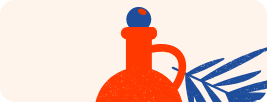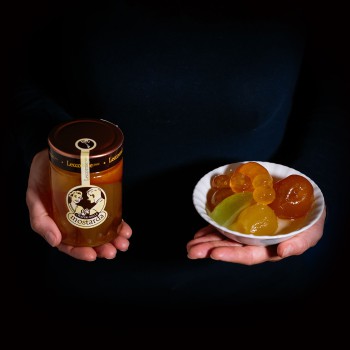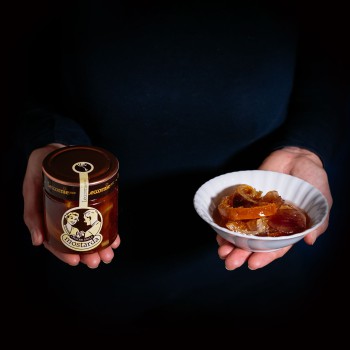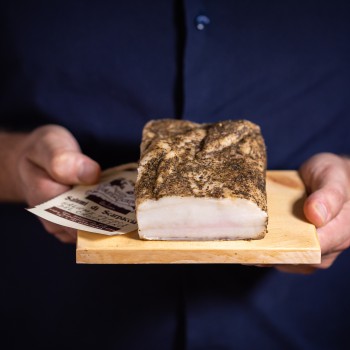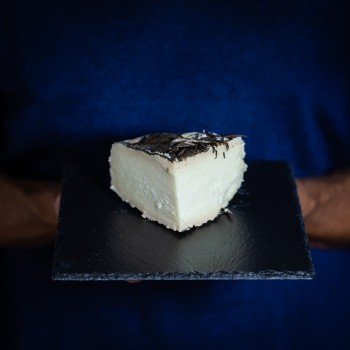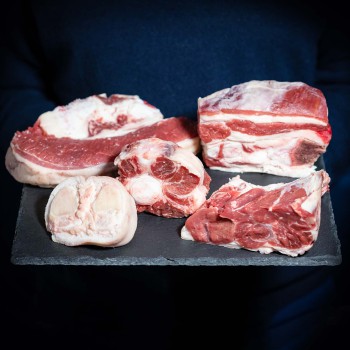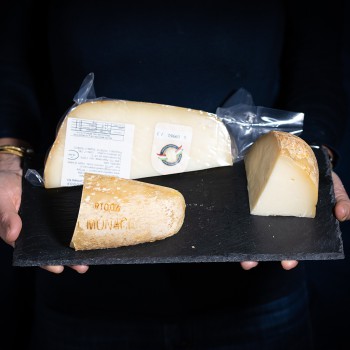- Meat & Seafood add remove
-
Cured meats & Cheeses
add remove
- Pasta & Pizza add remove
-
Preserves & Condiments
add remove
- Truffles, legumes & mushrooms add remove
- Desserts & snacks add remove
- Organic
- Tasting Selections
- Christmas
- Regali aziendali
- Brands
- Meat & Seafood add remove
-
Cured meats & Cheeses
add remove
- Pasta & Pizza add remove
-
Preserves & Condiments
add remove
- Truffles, legumes & mushrooms add remove
- Desserts & snacks add remove
- Organic
- Tasting Selections
- Christmas
- Regali aziendali
- Brands
Mostarda candied fruit
Mostarda from Cremona, tradition and so much more!
Mostarda from Cremona is the most famous assorted fruit mostarda, but different kinds of fruit make for surprising flavours.
That’s because this true local delicacy and symbol of good cuisine is not afraid of changing and reinventing itself.
Assorted candied fruit Mostarda from Cremona - 450g


The brands we selected
Assorted candied fruit Mostarda, an ancient delicacy with a unique and unmistakable flavour. Mostarda from Cremona, which contains large chunks of fruit, is the most famous one (and our favourite), but there are many other kinds of Mostarda and they are all different.
For instance, Mostarda from Vicenza is made with white mustard and fruit (quince is a must) which is cooked and sieved. Mostarda from Mantua is also made with apples - the Campanina apple variety – and mustard, but in this case, fruit is left in chunks.
Going down South, we meet a completely different Mostarda made with cooked must. It is the Mostarda from Sicily, which is sweet and not spicy at all and is, therefore, served as a dessert and not as a condiment. It is a completely different thing.
But why did we take such a long detour, describing every kind of Mostarda that exists in Italy? Because knowing all the different recipes helps us to understand what we actually mean by Mostarda which isn’t actually easy to define. Let’s take a step back.
Mustum Ardens
There is a linguistic issue which has led to some confusion. Mustum ardens means spicy must. So, the word Mostarda should logically refer to a dish made with cooked grape must, such as Mostarda from Sicily.
But, wait a second, what does the French moutarde mean? Mustard. And so does the English Mustard. So, the real Mostarda must be the one from Northern Italy without the must but with the mustard, right?
Generally speaking, we can say that Mostarda from Northern Italy tends to be more similar to mustard, while the traditional Mostarda from the South is still closer to mostum. It is a true delicacy, anyway you look at it.
Mostarda from Cremona, a celebration of mustard!
Assorted fruit Mostarda is, in all its variations, an exceptional product which was already commonly consumed in 1400. It was first mentioned in 1397, when the chancellor of Duke Giangaleazzo Visconti ordered “a big jar of assorted fruit with mustard” to the spice merchant Pietro Murri.
Since then, Mostarda has developed in two ways, the traditional and the innovative way. Mostarda from Cremona has, in particular, kept a chunky texture, but has widen the fruit range greatly.
A high-quality Mostarda contains few ingredients: sugar, fruit and mustard essential oil – not too much, not too little, just enough. There is another ingredient which is not featured on the ingredient list but is essential to make a successful Mostarda: time.
Making a good Mostarda from Cremona is hard and time consuming. Fruit and sugar should rest for a full day, then they have to boil for 5 minutes and rest again for at least 24 hours. Then, they have to cook once again and then rest for another day. Afterwards, they have to cook for the third time and when they are lukewarm, they are potted with mustard. Jars then – you’ve guessed it – have to rest in the dark for a couple of days and the Mostarda is finally ready.
It is easier to just buy it, right? Is it really worth it going nuts for a whole week with pots and jars, if you can just purchase the real, handmade Mostarda from Cremona made from selected and prime-quality fresh fruit and mustard essential oil? Remember also that sterilising pots at home is not as safe as industrial sterilisation processes.
You also get to enjoy both classic, traditional flavours and new flavours, a breath of fresh air for this great delicacy. Apart from the classic Mostarda with assorted fruit, try these unexpected combinations: onion and orange, ginger and lemon, pear and walnut or the simply delicious wild strawberries.
They all have their own personality: sweet or bitter, zesty or delicate. The consistency is always exceptional. Fruit just tastes better when it is cut in big chunks and it is also extremely satisfying to bite into.
Classic and creative flavour combinations
A traditional combination is mixed boiled meat with Mostarda from Cremona with assorted fruit - a dish that tastes like Christmas holidays.
A lighter and less demanding idea is a big cheese plate with mixed Mostarda assortment. Have fun playing with flavours, finding the most interesting combinations. I would like to give you only two suggestions: pear and walnut Mostarda with Provolone del Monaco cheese and ginger and lemon Mostarda with Asiago cheese.
Let’s move on to cold cuts. If you have some game salami, try it with wild strawberry Mostarda. The sweet fruit perfectly complements the intense flavour of meat. Orange and onion Mostarda pairs really well with lard, since it cleanses the palate.













